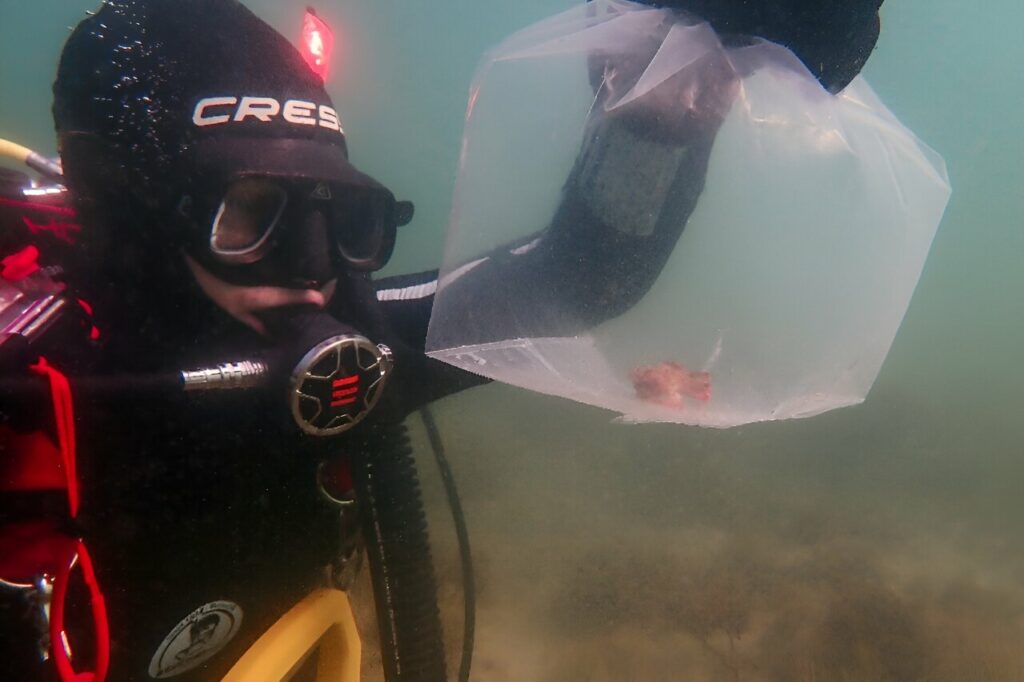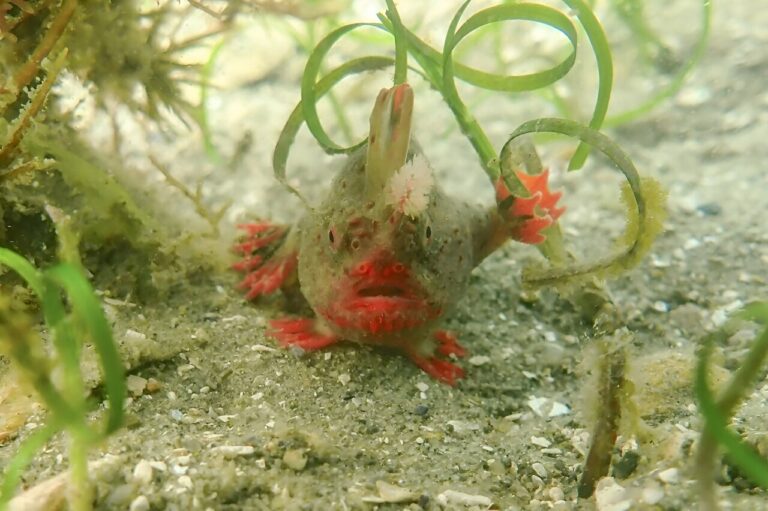Australian Scientists Rescue Rare Handfish from the Ocean Amid Climate Threats
A total of 25 exceedingly rare red handfish have been gathered by scientists from the waters surrounding Australia, with the aim of safeguarding this vulnerable species from the effects of warming oceans, human-induced changes to their habitat, and voracious sea urchins.In the wild, there are only approximately 100 red handfish remaining, characterized by their crimson and brown coloration resembling that of a goldfish, along with their short arms and webbed hands. These unique creatures inhabit a small portion of the reef off the southeastern coast of Tasmania.
Measuring around eight centimeters (three inches) in length, red handfish do not swim like most fish, but rather “walk” along the seabed using their pectoral and pelvic fins.However, the excessive grazing of sea urchins, pollution from urban areas, disturbances caused by boats, and the rising temperatures of the ocean have led to significant loss and deterioration of their natural habitat, as reported by the University of Tasmania’s Institute for Marine and Antarctic Studies.
In an effort to ensure their survival, scientists from the institute recently made the challenging and risky decision to relocate numerous red handfish from their natural environment to a secure facility.Marine scientist Jemina Stuart-Smith expressed concern about the impact of the current summer’s record-breaking temperatures on the already fragile population of red handfish. She stated, “We can only assume that this additional stressor will have a detrimental effect.”
On Wednesday, scientists provided an update, stating that the 25 specimens were faring well in their temporary aquarium homes and were under close observation for any signs of stress or illness.

Andrew Trotter, from the institute, mentioned that their highly experienced staff takes care of the fish every day of the week, and they also have a 24-hour call-out roster. He emphasized that they believe the fish are safe under their care, but their team feels a heightened sense of responsibility due to the small size of the wild population.
Trotter and his colleagues are hopeful that they can return the fish to their natural habitat when the austral winter arrives in June and temperatures drop. It is worth noting that sea temperatures off Australia have been steadily increasing since the early 1900s, a change that experts attribute to the emission of carbon dioxide and other greenhouse gases into the atmosphere.
This article is republished from PhysORG under a Creative Commons license. Read the original article.
Do not forget to share your opinion with us to provide you with the best posts !




0 Comments